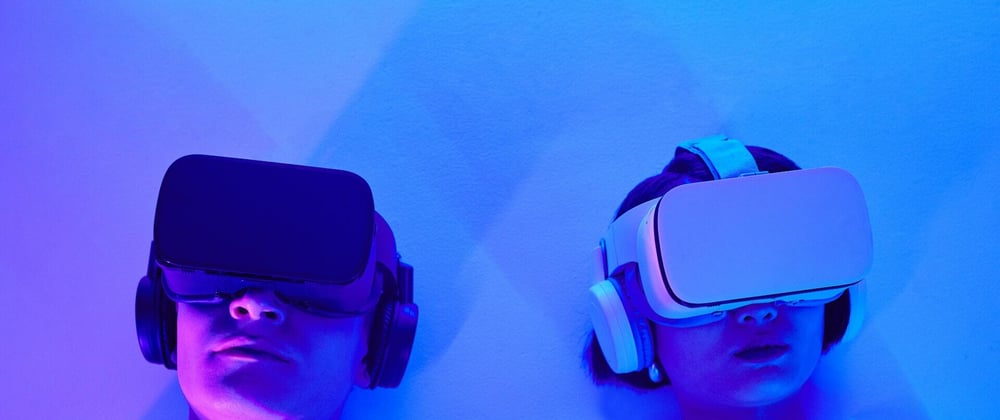Mental health is key to the quality of daily life. Suffering from mental illness is an issue that should require effective and accessible care. Many healthcare systems all over the world display all kinds of weaknesses and instabilities in addressing and treating mental illnesses and disorders, preventing countless people from receiving the right aid. Published in March of 2020, Angela Carbonell and her colleagues wrote a systematic integrative review that outlines the common barriers that many mental healthcare systems share globally. They found patterns of high costs, insufficient resources such as facilities and professionals, and dominance of a medical model that prioritizes medicalization and psychiatric institutions rather than social factors to most mental illnesses. Although these issues require serious structural evaluations done by policymakers and legislation, introducing new technologies such as virtual reality can be a useful tool in improving treatment on a more basic level that is specific to the patients. Cognitive-behavioral therapy (CBT) has been recognized as a remarkable therapy for a wide range of mental illnesses. Implementing virtual reality alongside cognitive behavioral therapy in treating mental illness would offer continuity and nuance to a mental healthcare industry that lacks affordability, stable rehabilitation management, and acknowledgment of the socio-cultural impact on a patient’s psychology.
The dominance of the biomedical approach in many mental healthcare systems severely limits treatment for illnesses strongly affected by social factors. These illnesses include phobias, paranoia, PTSD, and other anxiety disorders. The biomedical model asserts that mental illnesses are a product of the biology of the brain and favors methods such as medicalization and hospitalization. The nature of the mental illness makes it difficult to treat as the development and causes are not observable in the body alone; it is not strictly a biological disorder and thus should not be treated like one. The use of cognitive-behavioral therapy (CBT) in more recent research and clinical practices demonstrates that CBT is an effective therapy for many psychological problems such as depression, anxiety disorders, drug abuse, familial issues, eating disorders, and many more. Although CBT is sometimes paired with medicinal prescriptions depending on the illness, it strays away from the biomedical approach by emphasizing the role of thinking processes and the coping behaviors that will remedy them. Virtual reality can revolutionalize an already effective system of treating mental illnesses that may not actually require pharmaceutical or institutional solutions. Virtual reality in healthcare would allow access to an artificial environment that can be manipulated to suit a patient’s treatment and progress. Patients with social anxieties associated with public speaking would have access to virtual audiences of avatars. As the patient gains confidence and learns to speak to a small audience, the program can be manipulated so that the audience can grow, and thus the patient can overcome speaking to a large group of people. In other words, it would put the therapy into live-action practice that is specific to each individual patient. A systematic review on using VR techniques in treating eating disorders shows promising results in which “authors conclude that VR techniques may add to standard CBT as they decrease negative emotional responses to food stimuli and enable exposure to body shape”. The embodiment of virtual avatars also has advantages such as enabling taking on different perspectives and challenging existing biases. Learning to cope in social situations is a major component of CBT and so having this all encapsulated in a virtual program would open up access to a wide range of possibilities that were not available before.
Rehabilitation management is another common barrier to effectively treating those with mental illnesses. Instability in this area looks like a lack of qualified professionals, community resources, space in psychiatric wards, and continuous care. Virtual reality as supplemented with CBT would be a tool in alleviating some of the responsibilities of mental health care workers and the community. If virtual reality were an accessible resource to take home, it would be a tool the patient can use to help themselves and possibly healthcare workers in assessing their progress and the next steps in their treatment. A study on the effectiveness of self-training using a VR program showed that many of the patients were able to make improvements with their social anxiety disorder (SAD). The study measured “in-app variables” such as heart rate, eye contact, speech time, and subjective nervousness and confidence. Here, important data is extracted from the patient in a way that may have been more difficult to gather in traditional therapy procedures. Having a system that can accurately track and assess the progress of a patient, would alleviate time spent with the clinician. The clinician or trained worker can use the data directly to assess the patient. Not only would the patient be able to have instant access to therapy at home, but they would also be providing important information while the therapy is taking place. This advancement would also save on other things such as costs for space and travel for treatment.
Affordability is a determining factor in whether anyone can get access to healthcare at all. Many public mental healthcare systems globally have alarmingly high costs. On top of indirect costs such as loss of work, education, and housing, victims of mental illness also need to be able to afford direct costs such as treatment, medication, and hospitalization with hospitalization being the highest cost. A systematic review showed that “direct costs of medical attention for schizophrenia finds that persisting with the pharmacological treatment prescribed and discontinuity of care are predictive factors of hospitalization and are associated with worse results and high healthcare costs”. If virtual reality as a component of CBT were to become more influential in opposition to the biomedical model, it would possibly prevent the immediate reliance on those direct costs such as pharmaceutical treatment and hospitalization. In a study assessing the cost-effectiveness of VR-CBT for patients suffering from paranoia ideation and social avoidance, the researchers found that it was an economically viable approach to improving mental health. These researchers compared two groups of patients where one group received the treatment as usual (TAU) for psychotic disorders by clinical guidelines while the other group received that care but complemented with VR-CBT. Although the TAU + VR-CBT group initially was more expensive because of there being two treatments instead of only one, “during the follow-up [they saw] that the VR-CBT group resulted in decreased health care costs and decreased costs due to productivity loss compared to the TAU-only group”. Being an effective treatment is both time and money efficient because better quality care allows patients to improve faster and thus have less treatment needed. Although this study only measures the short-term effects and is specific to this particular psychotic disorder, it shows promising results that may be replicated with other illnesses. Additionally, having a VR system at home would save on other costs such as time and money spent to travel to healthcare facilities and adjust components of one's daily life. If this kind of treatment were accessed through the public healthcare system, it would also save on the out-of-pocket expenses that are expected of private facilities.
Virtual reality in addition to CBT may help in addressing the affordability of healthcare, weak rehabilitation management, and complementing the biomedical model. Virtual reality allows access to environments that can be controlled to suit the progress of the patient as they take on therapy for social anxieties. Sometimes this is needed more than medicalization or hospitalization. Virtual reality could alleviate some responsibilities from workers and facilities by possibly being accessed in the home. As supported by research, a more effective treatment will overall save costs both money and time. Another detriment that the mental healthcare system faces is the concurrent cultural attitude toward mental health. Stigmatization of mental illnesses is a pattern in many countries and prevents many from seeking mental healthcare services. Overcoming this obstacle would mean working against a history of labeling and false social conceptions of psychology. Introducing a new technology that is also applied in mainstream culture may be a viable solution. If virtual reality sores high as a popular technology, it can propel the message of treating mental illnesses with it.







Top comments (0)